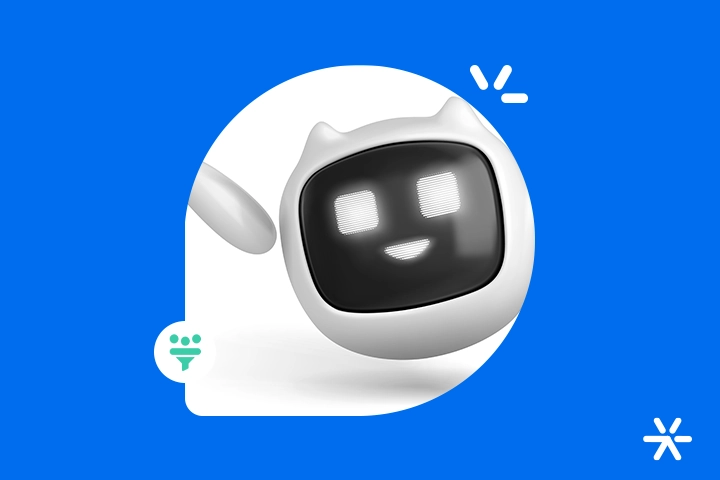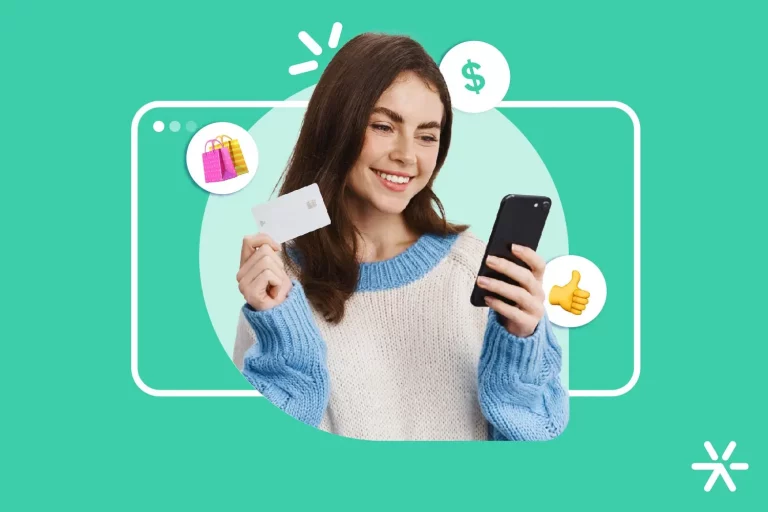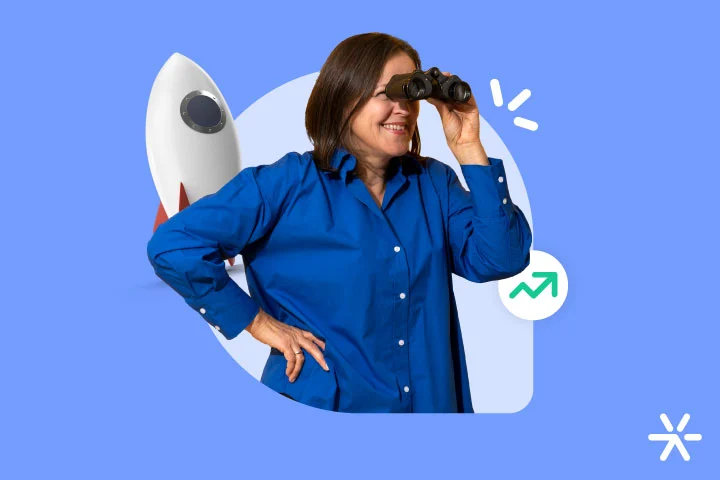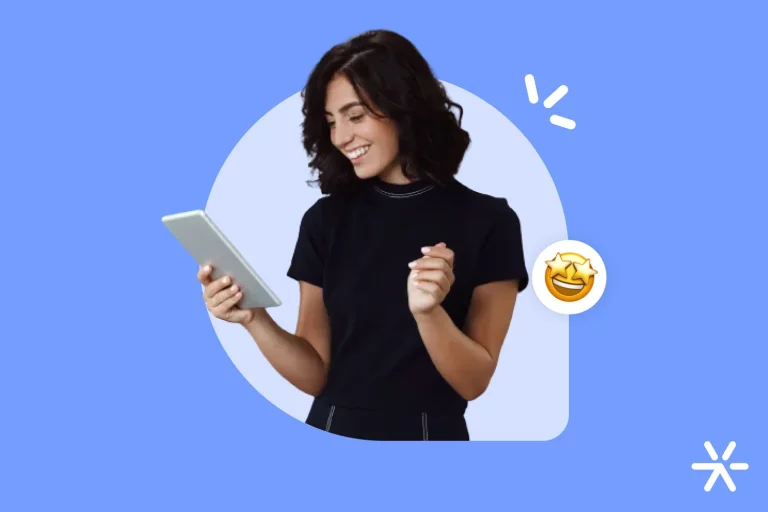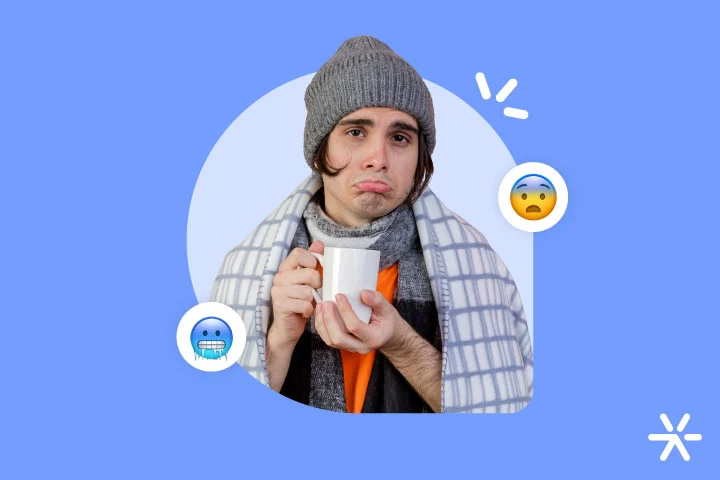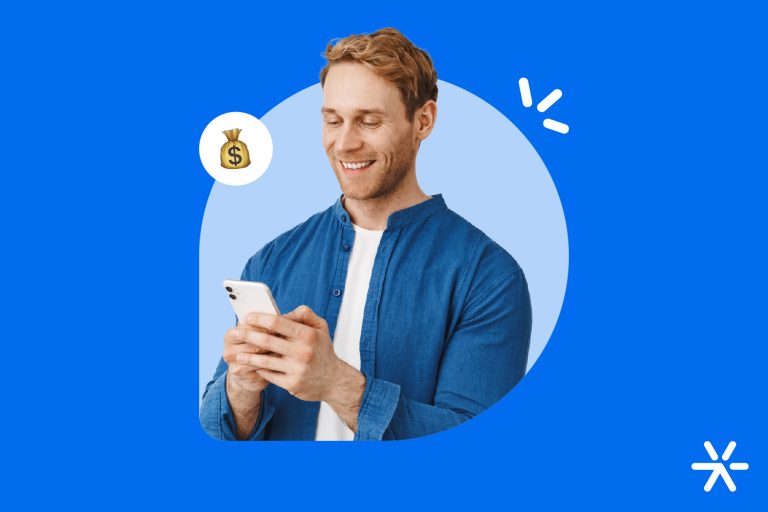How to Generate Leads with Chatbots – 10 Ideas to Increase Conversion
According to the report published by HubSpot in 2021, lead generation is the main goal of marketing and sales professionals today.
With the tools available online, this strategy is enhanced and brings even better results, such as pre-qualified contacts and increased conversion rates.
If you want to gain this kind of competitive advantage, a chatbot for lead generation might be the solution you are looking for.
Keep reading the article to learn more about the advantages and how to generate leads with chatbots!
What is the Importance of Generating Qualified Leads?
Lead generation is important to drive the business and create sales opportunities.
But many companies struggle with generating unqualified leads, which can be a sign of poor resource allocation, lack of understanding of the target audience, or a bottleneck in the strategy.
That’s why generating qualified leads is so important.
It ensures the right audience is being reached and captured, and also delivers to the sales team contacts who are closer to making a purchase, guaranteeing better financial results.
What is the Traditional way to Generate Leads?
Traditional lead generation can be done through conversion pages and contact forms.
In this format, the company offers a material, benefit, or advantage to the potential consumer, according to each stage of the sales funnel, and in return, receives the personal data of that consumer.
This exchange between brand and user traditionally happens through static forms, applied on Landing Pages, website pages, blogs, or even social media.
Also read: How to create a lead capture page + 3 examples
How Does a Chatbot for Lead Generation Work?
Chatbots are an alternative to static forms.
With this type of tool, the interaction between brand and consumer becomes a conversation.
Through predefined articles, this tool can simulate human service within a context that the consumer is already familiar with: instant messaging.
The tool changes your customer’s experience, making the process much more interactive and dynamic – and consequently increasing conversion.
Through the personalized approach of a chatbot, lead generation can increase by up to 202% (Source: HubSpot).
How to do Inbound Using Chatbots?
You might be wondering, what does “how to do inbound using chatbots” have to do with this article about generating leads?
Well, currently, inbound marketing is the main way companies promote themselves, gain clients, and increase authority.
Through it, the flow of people goes toward the brand and not the other way around. You no longer need to spend a lot of money on flyers, telemarketing, or billboards; now, the potential customer goes after the information and content the brands offer.
Okay, but what does the chatbot have to do with this?
Think of the chatbot in an inbound process as another element for attracting potential clients – the leads.
Through this tool, leads make better purchase decisions because you are guiding them step-by-step.
The most popular actions for understanding how to do inbound using chatbots are personalized product or service calls, as well as delivering specific articles, strengthening the relationship with the user and increasing the chances of conversion.
Let’s dive deeper into what you can do with the chatbot inside the inbound sales funnel and how this relates to lead generation!
Also read: Sales funnel and chatbot: how to use and 3 article examples
Top of the Funnel
The Top of Funnel (ToFu) is the first step in the buyer’s journey; it is the moment to attract and spark the interest of your potential customer.
A chatbot helps a lot at this first stage because it provides support and greatly increases the conversion of customers into leads – you can generate up to 3 times more leads on your site.
In the relationship between inbound sales funnel and chatbot, the top of funnel benefits from:
- Advanced lead generation, with up to 202% increase;
- Chatbot on the blog, with personalized calls for each article;
- Commercial contact segmentation;
- Automation of contacts via WhatsApp;
- Directing visitors to specific parts of the site;
- Offering rich materials;
- Assistance with navigation.
Middle of the Funnel
The Middle of Funnel (MoFu), the stage of solution consideration, can also be worked on with a chatbot.
At this stage, nurturing the lead you converted is crucial. And in this challenge, a chatbot can help a lot.
Through personalization and quick responses, you have a better chance to keep your lead’s interest.
See how the inbound sales funnel and chatbot help you in the middle of the funnel:
- Lead segmentation for more efficient nurturing;
- Lead qualification through questions in middle-of-funnel materials;
- Personalized messages on middle-of-funnel landing pages;
- Immediate responses on commercial pages;
- Analytics for insights and creation of more personalized sales messages, with A/B testing.
Bottom of the funnel
Finally, the Bottom of Funnel (BoFu) is when your customer is ready to close the sale.
At this stage, arguments need to be more direct and personalized based on experience. By connecting the sales funnel and chatbot, you create synergy that delivers this personalized approach to your leads.
This synergy is developed through actions such as:
- Answering questions and overcoming objections with artificial intelligence;
- Delivering qualified leads;
- Directing to the correct departments;
- Possibility to switch to live chat without difficulties, depending on the model;
- Free trials with automated support, depending on the tool used;
- Retention of interaction history, also depending on the chosen chatbot.
What about Outbound?
I know we’ve focused a lot on Inbound until now, as it’s the strategy booming in digital marketing. However, Outbound Marketing is not left behind when it comes to possible uses of a marketing and sales chatbot.
Unlike inbound, outbound actively seeks clients with the ideal profile. That is, as a company, you go after clients, approach them, and start the relationship.
Some examples of outbound actions are:
- Active prospecting (client prospecting);
- Cold Calling or Telemarketing;
- Cold Mailing or Email Marketing;
- Social Selling;
- Sales through WhatsApp;
- Paid media (digital or traditional).
Remember that these two actions, sales through WhatsApp and Paid Media, can be assisted by chatbots in their flows.
Imagine this scenario: you are investing a lot in paid media, for example Facebook Ads, but only receive unqualified leads, which wastes time when they arrive on your WhatsApp.
By having a marketing and sales chatbot, you can direct each user who clicked your ad to a flow in this tool, which will qualify and segment them, then distribute to your WhatsApp.
Also read: Inbound or Outbound: Which is the Best B2B Sales Strategy?
More ways to Generate Leads with Chatbots
You will notice that some of the strategies to generate leads we mention below relate to some actions of how to do inbound using chatbots, after all, the goals are the same: lead the user to the bottom of the funnel with the best possible experience.
With that in mind, let’s see how the tool can assist at all stages of the sales funnel, with different objectives.
Check out some of the main uses:
1. Create personalized approaches to capture attention
To improve conversion rates, you can create different approaches and question scripts in the chatbot, according to criteria such as:
- Source channel: through which channel did the visitor arrive at your page? The communication can be different if the user came from social media, ads, organic search, or direct traffic, for example;
- Visit behavior: is it the first time the visitor reaches the page or have they visited it before? Is it the first page of your site or has the visitor been browsing for a while?
- Page content: the chatbot’s approach on a site’s homepage can be different from the page inviting for a free trial, for example.
Match your chatbot communication to your visitor’s interests and funnel stage.
Check out three examples of personalized approaches that differ between Discovery (source channel), Interest (visit behavior), and Consideration (page content):
🔍 Also read: Leadster: How Smart Calls Increase Conversion
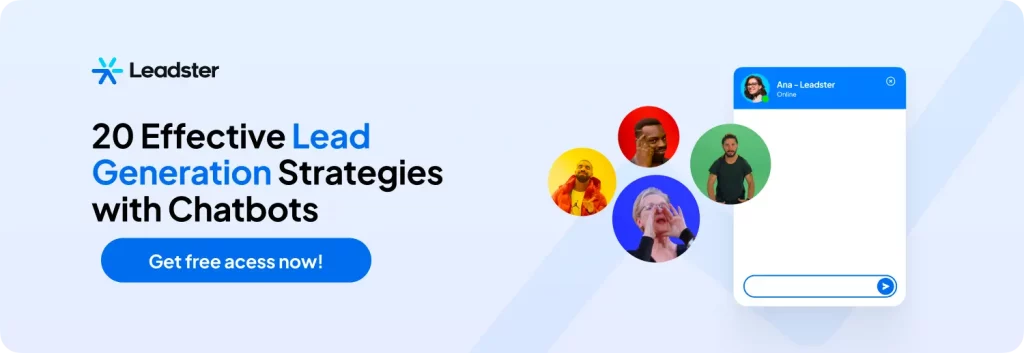
2. Make a relevant offer to the visitor
Also analyzing behavior and provided data, you can offer through the lead generation chatbot offers that spark the visitor’s interest.
Again, it is essential to understand the sales funnel stage so the offer doesn’t push the potential customer away.
Check the example below:
3. Capture the user’s contact information
Data capture is more dynamic in a conversational marketing tool since the visitor provides information throughout the interaction.
Besides the basic data requested in static forms, chatbots have a greater chance of obtaining relevant data later on for the sales team, as they ask specific questions to deliver the information that leads want.
However, always be careful to collect user data legally. In Brazil, we have the General Data Protection Law (LGPD), which sets rules for protecting personal data. Its goal is to ensure companies handle personal data legally and transparently.
The law requires companies to obtain explicit consent from individuals before collecting and using their data and to notify data protection authorities in case of data breaches, so stay alert!
Here’s how Leadster’s chatbot captures user data:
4. Use qualification questions to understand the lead’s profile
These questions include qualification aspects.
For this reason, it is essential to define these criteria before building the conversation scripts.
If purchasing power, location, decision-making authority, and purchase frequency are qualifiers, make sure the script includes questions aimed at discovering this information.
5. Answer doubts and overcome objections with Artificial Intelligence
After capturing contact and qualification information, the chatbot can also be included in the process to answer questions and overcome objections in real time, even before the lead reaches the salesperson.
This way, it is possible to:
- Resolve 78% of your website’s service requests automatically.
- Qualify leads and reduce the number of unqualified contacts.
- Increase your sales conversion by up to 50%, answering visitors during their purchase.
- Sell 24 hours a day, chatting about your product/service in seconds.
If you want to test this kind of tool on your site, just click the banner below. 👇
6. Segment your leads based on profile and funnel stage
All this information enables another action regarding your lead base: segmentation.
Through segmentation, you can group contacts according to profile, product or service interest, and purchase maturity.
These segments are the basis for other resources you can explore, as you will see next.
With the lead scoring feature, you can evaluate and segment your leads by profile and qualification.
7. Integrate with your sales and marketing tools
Your marketing and sales tools, such as automation platforms and CRMs, can be integrated with the chatbot to make your strategy—especially inbound—even more complete.
This also enables lead continuity within the sales funnel, offering new materials of interest, nurturing and qualifying leads, and sending the best opportunities to the sales team for approach.
Here are some tools that can integrate with Leadster’s chatbot:
8. Create nurturing flows for leads not ready to buy
You know the nurturing and qualification we just mentioned?
They’re important because not all generated leads will be qualified for sales.
Not all leads coming through inbound marketing will already know their problems or be looking for solutions.
You may have a lead base that fits your ideal client profile but is not yet ready to complete a purchase.
To improve conversion rates and focus your sales team’s efforts on contacts with a higher chance of buying, ensure leads go through nurturing and qualification flows.
Below is an example of nurturing flows created by RD Station:
9. Distribute leads among salespeople
When it’s time for sales outreach, leads need to be distributed among salespeople to establish contact.
With a good chatbot tool, CRM integration is possible, allowing strategic distribution.
Want to read more about this topic? We recommend the post “How to Distribute Leads in the Sales Team?”
10. Send leads directly to WhatsApp
As soon as your visitor finishes the chatbot conversation, if they have a question and want to interact in real time with your support team, you can provide a redirection link to WhatsApp.
At Leadster, you can apply this feature in two ways:
- Sending the lead through a link provided in the chat; or
- Automatic redirection to WhatsApp at the end of the flow.
Check the example below:
11. Generate instant meetings
No more wasting time trying to find a time that fits your schedule and your leads’—with the chatbot, your visitor instantly schedules a meeting.
Here at Leadster, the meeting scheduling feature is integrated with Google Calendar, so you just need to make your calendar available for users to check available times and book a meeting.
This speeds up your pre-sales process, increases team productivity, automatically distributes leads to your sales representatives, and shortens the sales cycle.
The Contraktor case clearly shows how team productivity increased and more sales were closed with the Meeting Scheduling function.
What are the Advantages of Generating Leads Using Chatbots?
We already showed how to do inbound using chatbots. But beyond that, data shows how this tool has been used by companies and well received by users.
According to research by Drift, 63% of consumers said they are more likely to return to a site that has a chatbot feature.
Therefore, we can affirm that besides increasing conversion rates compared to static forms, a tool like a lead generation chatbot also brings many other benefits.
Check some below.
🔍 Learn more: Online Chatbots are Already Reality for Thousands of Companies — Understand the Tool’s Growth
Fast, Efficient, and Personalized Service
With conversational marketing tools, the user or visitor has a chatbot or virtual assistant available whenever needed, with automatic and immediate responses.
Additionally, through data and behavior analysis, interaction personalization is adapted to the user’s needs.
Because the tool is consumer-centered, it can deliver what the visitor wants in the simplest and fastest way possible.
Always available, 24 hours a day, 7 days a week
A chatbot is an automated tool with predefined answers.
Therefore, it does not depend on a support team available 24/7.
Users get the answers they need—or at least a pre-service—at any time.
Increases engagement and conversion
A lead generation chatbot improves conversion rates since it is more attractive than static forms.
This alternative makes users more comfortable sharing contact data through personalized service and a more fluid dialogue between brand and consumer.
Automatic lead qualification
By offering fast, easy, and personalized service, the company acquires relevant information throughout the contact or interaction.
With automated service, you can work more dynamically than with static forms, capture lead data, and start qualifying that contact from the beginning of the interaction.
Thus, you generate deeper knowledge about consumers by collecting a much larger volume of information.
🔍 Also read: Leadster Tips: How to Qualify a Lead Generated with Leadster?
Integration with sales and marketing systems
Chatbots can be integrated with other tools used by marketing and sales teams, making funnel strategies more complete and giving access to all the information teams need for nurturing, qualifying, and approaching these contacts.
Sending lead information to WhatsApp
WhatsApp has become a strong channel for consumer service, and this tool can also be integrated with the best chatbots.
This way, the first steps of customer service happen through an automated tool, and if needed, contacts can be directed to human service without losing any data.
🔍 Also read: 8 Sales and Marketing KPIs Leaders Want to See on Your Dashboard
What is the Best Chatbot for Lead Generation?
To find out which is the best chatbot for lead generation, it is first necessary to understand your company’s objectives, your operating channels, the strategies to follow, and who your target audience is.
It is also important that you test the tool you choose.
However, we cannot fail to recommend Leadster, a platform specialized in lead capture and qualification.
We are talking about the first conversational marketing platform in Brazil, which uses this methodology to provide the best customer experience, resulting in more qualified leads and consequently a higher conversion rate.
Learn more about this topic and make the right choice with the article “Meet the Best Chatbots on the Market.”
How to Create a Free Chatbot for Lead Generation?
It is already more than clear that lead generation is an essential part of the sales funnel.
And along with it, we know that chatbots are allies and will enhance the strategy.
With that in mind, let’s quickly go through the step-by-step process of how to create a free chatbot with Leadster.
Check it out!
- Start your demonstration;
- Configure your account;
- Finalize your first flow;
- Activate Leadster on your site;
- The rest is up to Leadster!
Done, now you already have your chatbot ready to generate even more leads!
Don’t forget to test it free for 14 days and see positive results on your dashboard!


